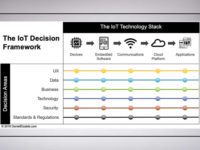First, we had individual controls systems within a building made up of simple, low-voltage electricity and pneumatic control systems for larger building management installations. Then the energy crisis occurred, beginning in the 1970s, challenging building managers to strive to invest in redefining their facilities into “smart buildings.”
As we entered the 1980s, and with advancements in technology, we began to hear the phrase “intelligent buildings,” coined by United Technology Building Systems Corp. These facilities simply had more powerful energy-efficient HVAC designs, electrical power and lighting controls, and water conservation features, along with connections to a building automation system (BAS).
In the 1990s, building management had a new tool — the internet — to help better manage buildings and to help protect the environment, reduce energy consumption, and improve occupant comfort. A drawback to the internet was that building management, as well as financial management and the associated databases, could be compromised by computer hackers, and so security automation systems were added to the BAS computer workload.
Today, the latest and greatest in management of buildings is perceived to be artificial intelligence (AI) building management. But are we ready for AI technology contributing to the operation, maintenance, security, and occupant comfort within these buildings? Before we jump ahead to AI management of our buildings, the following questions should be asked:
- Did the 20th century era of building management achieve the return on investment (ROI) expected when the building industry began automating the individual HVAC system controls?
- Did “smart buildings” provide the ROI from furnishing and installing BAS computer technology?
- Did “intelligent buildings” provide the ROI from furnishing and installing the next generation of automation; integrated building management systems (IBMS)?
Pneumatic Controls
I remember when pneumatic controls were the control system of choice in the HVAC building industry. They weren’t very sophisticated, but they worked and were easy to operate and maintain. When the business began to embrace electrical systems in the 1970s, such as electric reheat coils, baseboard radiation, etc., we began to see electric automatic temperature controls (ATC) infiltrate HVAC applications.
At the same time, No. 6 fuel oil, and other slightly lessor grade oils, e.g., No. 4 oil, started to lose their popularity as environmental concerns began to be heard. When the 1972 oil embargo affected oil supply and price crisis, the building industry, and more specifically the HVAC industry was forced to change the way we engineered and built the utility infrastructure of facilities, no matter the application, e.g., educational, healthcare, commercial, etc. building types.
Pneumatic controls would eventually fade away in the coming years, except in the industrial businesses, and electric controls advanced to electronic controls and finally digital controls.
Design engineers would look to the ATC sales representatives for the latest in HVAC system control strategies throughout this building management progression. In addition to temperature control, the design intend was now looking to reduce energy consumption via somewhat more sophisticated control schemes. The days of simple, 100% outdoor air systems with reheat coil in the 1960s and early 1970s were being replaced with central air systems with energy efficient airside economizer cycle for “free outdoor air” ventilation. Overreacting to new variable volume sequences of operation in the 1970s and 1980s frequently resulted in “sick building syndrome” that facility managers, as well as the design engineers, had to resolve. We learned that free air is never free!
Because many design engineers didn’t write their own HVAC sequences of operation, relying on the ATC sales representative, some sequences did not meet the design intent of the engineer either through miscommunication or simply a misunderstanding of what the owner project requirements (OPR) were. When a problem occurred at the time of system startup, and prior to building system commissioning coming into its own, the design engineer could be at a disadvantage because he or she was not specifically familiar with the final ATC sequence of operation that had gone into the contract specification. It was this kind of problem that resulted in building owners not being happy with the final installation performance. But the silver lining in responding to these ATC issues was the introduction of third-party commissioning of HVAC systems with its checks and balances. Going forward, the building owner had someone to count on if the building systems did not meet the OPR and their energy management goals.
Too Smart
So now we return to the three questions beginning with:
Did the 20th-century era of building management achieve the return on investment (ROI) expected when the building industry began automating the individual HVAC system controls?
It can be assumed there was an acceptable ROI to the introduction of ATC systems evolving from electronic-pneumatic to electronic aided by ATC software programs that played a limited energy conservation role in managing the HVAC, lighting, etc.
ATC software programs for computers progressed to BAS computers and this concept challenges the control industry, design engineers, and, especially the building owner’s facility management staff. The staff could make simple program adjustments but keeping the systems in spec, to be able to have these HVAC systems continue to meet design intent, was a challenge. As a result, I frequently saw the systems placed in manual operation. One reason for this reactive approach, there wasn’t an individual assigned to manage the BAS computer and all the features that made up this building management system. How will AI improve the operator’s HVAC system knowledge to maximize the power of the BAS, especially if there is no AI BAS computer operator assigned to monitor this job?
Did smart buildings provide the ROI from furnishing and installing BAS computer technology?
Going to a more digital process to manage the BAS computer programs did provide a ROI if the computer operator was an experienced and knowledgeable individual with the ability to maximize the features and receive the benefits of managing the HVAC programs, as well as the other programs, e.g., lighting control management.
Efficient management required using a computer and having in place information to monitor, measure, benchmark and take positive action to continuously improve the BAS performance, reduce energy consumption and improve occupant comfort. My recommendation to building owners, then and now, who are anxious to reduce operating cost, as well as save energy, has been to draft a job description specifically for a full-time BAS operator who can fill this role. Today, individuals usually are not sitting in front of a BAS computer on a regular basis monitoring the energy conservation software packages, as well as the other programs, e.g., security, unless they are managing a mega-complex. They can access BAS data from their cell phones when needed.
Achieving ROI
An excellent example of reaching and exceeding your ROI for hiring a dedicated BAS operator was when a building owner, with a just completed mega-facility, asked me for my opinion on how he could dramatically reduce his electric bill. He understood that his new building had the latest in energy conservation even to the point of investing in a gray-water system to conserve water on the site.
Although the HVAC system and lighting systems were engineered to be very energy efficient, this owner’s building operator was overwhelmed when the utility bills started to arrive. I recommended the owner hire an individual who previously was the lead controls technician on the construction project stating, “Hire an individual with an ATC-BAS technician background and he or she will provide a ROI to reduce the utility bill, as well as recover this person’s annual salary.” The individual hired reduced their first year’s utility bill by a little over $1 million with further savings to come in year two.
The point to the story is that a facility management group can have the latest in BAS technology, but if there isn’t someone driving the BAS process, then all this advance technology will not achieve the project’s design intent.
Did “intelligent buildings” provide the ROI from furnishing and installing the next generation of automation; integrated building management systems (IBMS)?
If a building management team is not achieving maximum use and receiving the maximum ROI with their current BAS computer, one that has the ability to manage the HVAC systems, lighting control systems, preventive maintenance work order system, asset database system, demand-side management, security, utility metering, leased property metering, etc., how will a building owner or property manager maximize the investment of AI? Again, if there isn’t someone qualified to drive the IBMS process and interact with AI, then all this AI technology will miss its mark.
Probably the only way a facility will be able to maximize an AI computer system in the next five years is to invest in an individual who is highly skilled in IBMS, AI technology, and the software programs that make up the total management of a facility. An alternative to hiring someone on staff who will meet the job description requirements will be to outsource this responsibility to a management company that can deliver on the AI management skills.
Conclusion
There has been no research into the number of BAS computer systems that have been furnished, installed, and in operation going back a minimum or 25 years, or the number of full-time BAS computer operators versus facility staff assigned to check and adjust on a regular basis. And so, realizing the ROI for furnishing and installing these ATC systems and BAS systems can only be speculated.
There are a lot of building management ROI success stories over the years. Just peruse past issues of this magazine, and one will most likely find a case study each and every month that was a building management success stories. But how many facilities did not meet building owner expectations? For a period of several years there was a lot of energy retrofit projects, funded by utility companies and other grants, based on very attractive ROI projections that made existing HVAC systems better than before.
BAS computer applications have improved their capabilities from lessons-learned, a.k.a. energy retrofit initiatives, resulting in more advanced efficient HVAC system applications, improved digital technology, and new design intent goals, such as achieving Net-Zero and meeting carbon neutral project goals.
There are numerous energy savings through energy management software programs available right now for building management, but without committing an individual to be accountable for the financial savings success, a building owner should not believe that placing the BAS in cruise control, everything will work out find. Today’s software programs are very sophisticated and require attention. If one believes AI can fill the position of BAS operator, in the future, then maybe this will be the solution for building owners and building management firms. Until then, building owners need to proceed cautiously with AI management possibilities that should include a management plan to manage AI.
References:
The Future of Artificial Intelligence in Buildings, Zoltan Nagy, Ph.D., and Rania Labib, Ph.D., ASHRAE Journal, Vol. 65, Issue 3, March 2023





